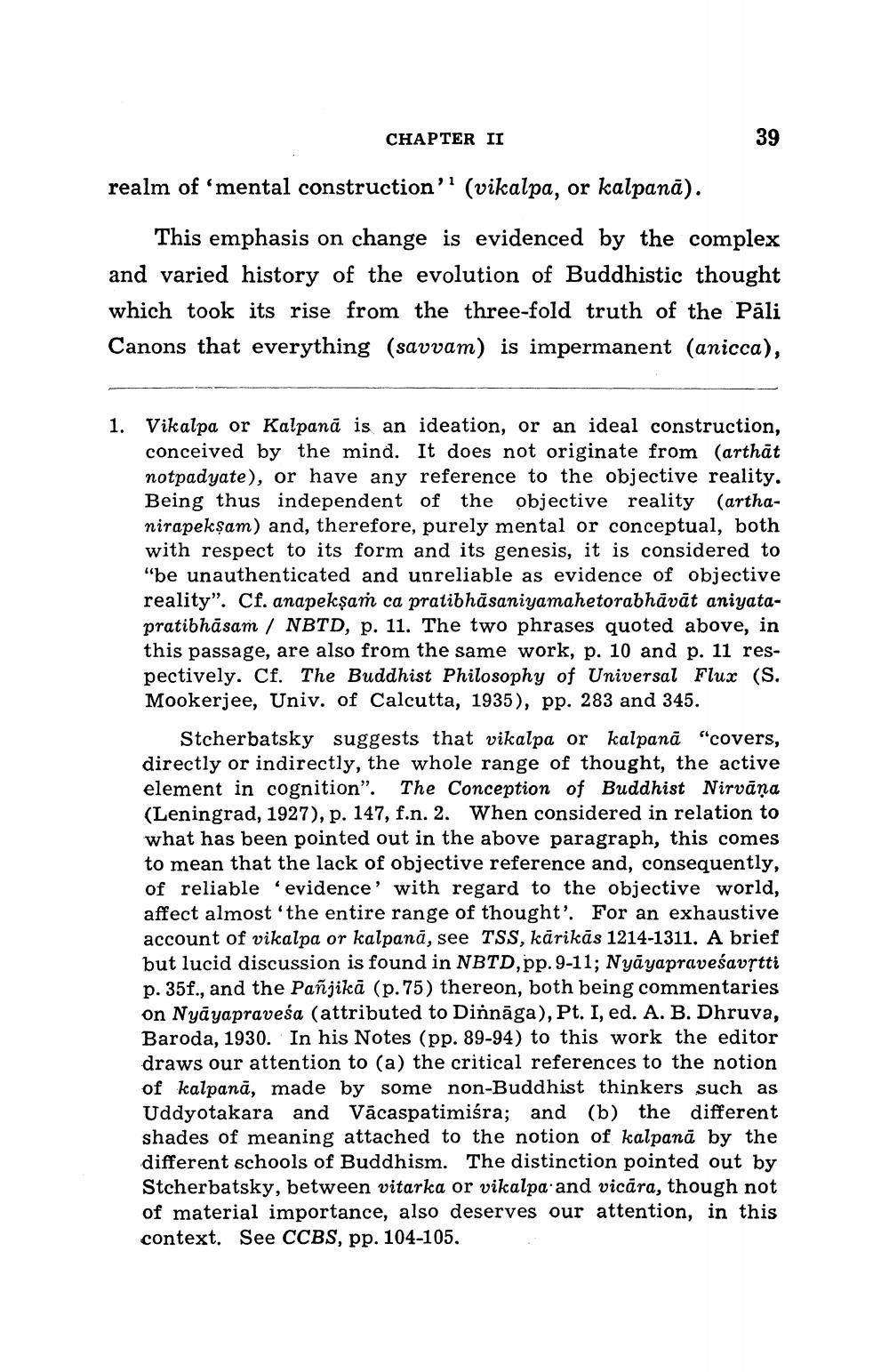________________
CHAPTER II
39
realm of mental construction' (vikalpa, or kalpanā).
This emphasis on change is evidenced by the complex and varied history of the evolution of Buddhistic thought which took its rise from the three-fold truth of the Pāli Canons that everything (savvam) is impermanent (anicca),
Vikalpa or Kalpana is an ideation, or an ideal construction, conceived by the mind. It does not originate from (arthat notpadyate), or have any reference to the objective reality. Being thus independent of the objective reality (arthanirapekşam) and, therefore, purely mental or conceptual, both with respect to its form and its genesis, it is considered to "be unauthenticated and unreliable as evidence of objective reality". Cf. anapekşam ca pratibhāsaniyamahetorabhāvāt aniyatapratibhāsam / NBTD, p. 11. The two phrases quoted above, in this passage, are also from the same work, p. 10 and p. 11 respectively. Cf. The Buddhist Philosophy of Universal Flux (S. Mookerjee, Univ. of Calcutta, 1935), pp. 283 and 345.
Stcherbatsky suggests that vikalpa or kalpanā "covers, directly or indirectly, the whole range of thought, the active element in cognition". The Conception of Buddhist Nirvāņa (Leningrad, 1927), p. 147, f.n. 2. When considered in relation to what has been pointed out in the above paragraph, this comes to mean that the lack of objective reference and, consequently, of reliable evidence' with regard to the objective world, affect almost the entire range of thought. For an exhaustive account of vikalpa or kalpanā, see TSS, kārikās 1214-1311. A brief but lucid discussion is found in NBTD, pp. 9-11; Nyāyapraveśavștti p. 35f., and the Pañjikā (p.75) thereon, both being commentaries on Nyāyapraveśa (attributed to Dinnāga), Pt. I, ed. A. B. Dhruva, Baroda, 1930. In his Notes (pp. 89-94) to this work the editor draws our attention to (a) the critical references to the notion of kalpana, made by some non-Buddhist thinkers such as Uddyotakara and Vācaspatimiśra; and (b) the different shades of meaning attached to the notion of kalpanā by the different schools of Buddhism. The distinction pointed out by Stcherbatsky, between vitarka or vikalpa and vicāra, though not of material importance, also deserves our attention, in this context. See CCBS, pp. 104-105.




